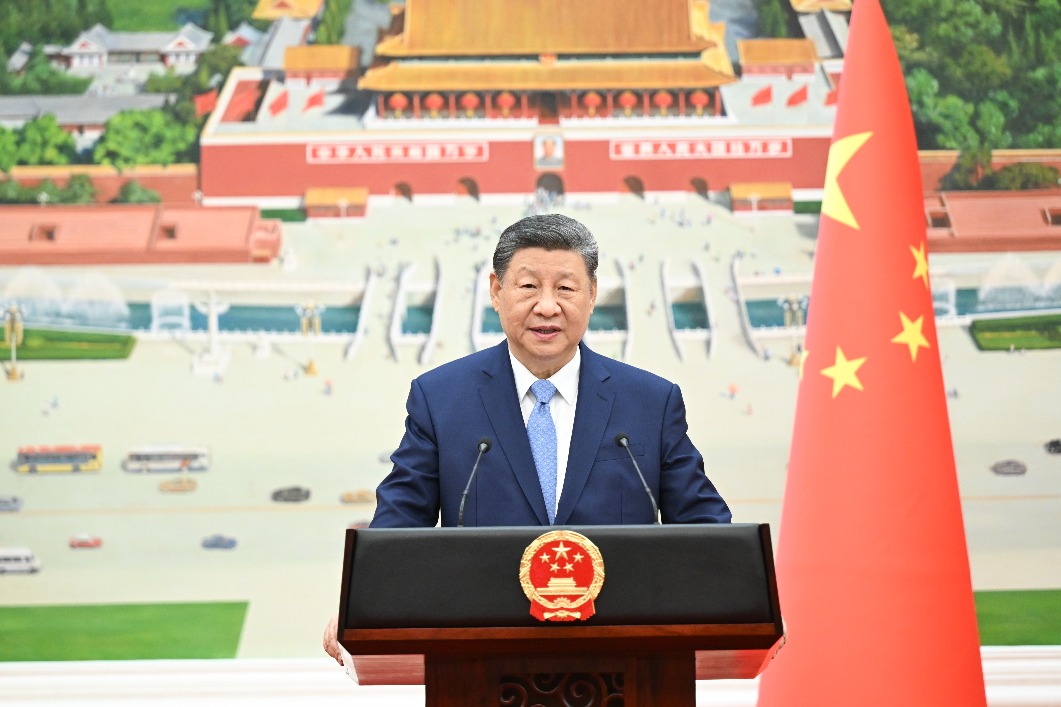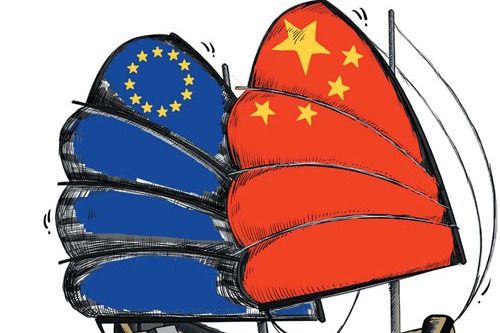Gaming the climate debate to hurt China


Last September, the US Senate unanimously passed an amendment asserting that China shouldn't be considered a developing country in the Kigali Amendment of the Montreal Protocol, an important agreement to cut greenhouse gas emissions.
This year, the “PRC Is Not a Developing Country Act” and the “Ending China's Developing Nation Status Act” were approved in the House and Senate respectively, both requiring the Department of State “to pursue the labeling or treatment of the PRC as a developed nation in each international organization of which the US and the PRC are both current members.”
The US lawmakers regard current climate treaties as outdated and accuse China of free-riding on emission reduction without breathing a word about the US top ranking in all-time total emissions and annual per capita emissions.
What's the truth about China's development and its climate effort?
After decades of hard work, China is now the second-largest economy in the world. But with its uneven development, it still faces typical developing-country challenges such as imbalanced regional development, income gap and even energy poverty in some areas.
By international standards, China still has a long way to go to become “developed”. In 2022, China's per capita GDP was one-fifth that of developed economies and only one-sixth that of the US. According to the World Bank and UNDP, China now ranks 70th in per capita gross national income and 79th in the Human Development Index, similar to other major developing nations.
It's based on such realities that China has been categorized as a developing country in universally recognized agreements and treaties, including the WTO, UNFCCC, and the Montreal Protocol.
As a major developing country, China is promoting sustainable development to the best of its capacity.
Facts speak louder.
Domestically, since 2012, China has achieved an annual economic growth of 6.2 percent with merely 3 percent of annual growth in average energy consumption. Despite its own difficulties, China has made a solemn commitment to peak carbon emissions before 2030 and achieve carbon neutrality before 2060, an unprecedented, ambitious goal in both historical and global perspectives.
Internationally, China has actively supported climate talks, agreements, and protocols and has helped other developing countries through technology transfer, foreign aid, overseas investments, among others. Since 2016, China has launched 10 low-carbon demonstration zones, 100 mitigation and adaptation projects and over 200 foreign assistance projects through South-South cooperation. As of June 2022, China has signed 43 climate cooperation documents with 38 developing countries, with a total contribution of over 1.2 billion yuan to climate finance.
During her visit to China this June, UN Deputy Secretary-General Amina Mohammed praised China for its commitment in multilateralism to tackle climate change and its ability “to set the example of a new development pathway that decouples growth from emissions.”
So why hyping up this narrative? What are the real intentions?
The immediate purpose is to impose higher climate standards on China, thereby raising China's development costs. And that's not all. Excluding China from the developing family will further undermine the representation and voice of the developing world. When the collective rights and interests of developing countries on climate issues are undermined, who stands to gain?
Moreover, pointing fingers at China is an attempt to cover up US' own failure to engage in cooperation, provide climate finance, and facilitate a green transition.
So far, the US is the only major power that once withdrew from the Paris Agreement, which represents the greatest global consensus to combat climate change. Such backtracking has seriously exacerbated the climate governance deficit and dampen international confidence for cooperation.
As the most advanced economy, the US performance in climate financing is rather underwhelming. Based on its share of cumulative emissions, the US should contribute $39.9 billion annually. But in 2020, it provided only 19 percent of that amount–$7.6 billion. According to Carbon Breif, a climate-specialized website, though others were also giving way less than their fair share–Canada 37 percent, Australia 38 percent and the UK 76 percent–the US by far, is the biggest laggard. Even the Biden administration's pledge to increase climate finance support to $11 billion by 2024 falls far short of its fair share.
In recent years, the US photo-voltaic market has been heavily protected from global imports. Anti-dumping and countervailing duties were imposed on Chinese PV cells and modules in 2012 and 2014 and tariffs on the entire global PV industrial chain in 2018. In 2022, under the name of “human rights protection”, an entity list was crafted to further restrict the import of Chinese PV products. These protectionist practices only serve to hold back the growth of the global PV industry and slow down the global process of green transition.
If the US really wants to dominate climate governance, what it should do is to take constructive actions to contribute to global cooperation. Reluctance to meet its own responsibilities or attempts to politicize the climate issue is simply not the right path forward.
What the US should realize is that China's developing country status is defined by international standards based on realities on the ground. This widely-recognized fact cannot and certainly will not be arbitrarily altered by any country for any purpose.
Climate change is a pressing global challenge. It is not just another system to be gamed to defame China. The healthy and sustainable future of all humanity is at stake. It's high time to think hard about how to work together for Mother Nature.
The author is a current affairs commentator based in Beijing.
The views don't necessarily reflect those of China Daily.
If you have a specific expertise, or would like to share your thought about our stories, then send us your writings at opinion@chinadaily.com.cn or comment@chinadaily.com.cn.
































